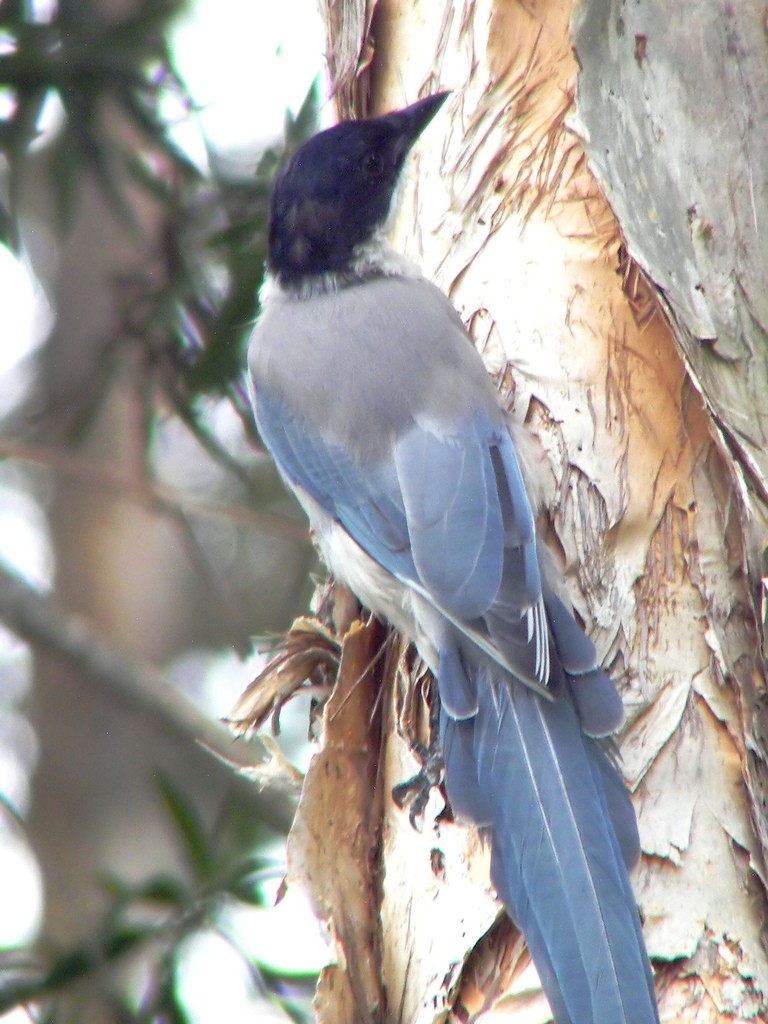Azure-winged Magpie
A species of Azure-winged magpies Scientific name : Cyanopica cyanus Genus : Azure-winged magpies
Azure-winged Magpie, A species of Azure-winged magpies
Botanical name: Cyanopica cyanus
Genus: Azure-winged magpies
Content
Description General Info
 Photo By Charles Lam , used under CC-BY-SA-2.0 /Cropped and compressed from original
Photo By Charles Lam , used under CC-BY-SA-2.0 /Cropped and compressed from original Description
The azure-winged magpie (Cyanopica cyanus) is a bird in the crow family. It is 31–35 cm long and similar in overall shape to the Eurasian magpie (Pica pica) but is more slender with proportionately smaller legs and bill. It belongs to the genus Cyanopica. It has a glossy black top to the head and a white throat. The underparts and the back are a light grey-fawn in colour with the wings and the feathers of the long (16–20 cm) tail an azure blue. It inhabits various types of coniferous (mainly pine) and broadleaf forest, including parks and gardens in the eastern populations. 
Size
38 cm
Colors
Black
Gray
White
Blue
Life Expectancy
15 years
Nest Placement
Tree
Feeding Habits
Azure-winged Magpie primarily feed on acorns, pine nuts, invertebrates, and larvae, complemented by soft fruits, berries, and occasionally human scraps. They exhibit foraging behaviors that are adapted to exploit a variety of food sources.
Habitat
Azure-winged Magpie predominately inhabits lowland thickets and areas with mixed deciduous vegetation, such as willow and Prunus thickets near rivers and in parks, including urban centers. This species tends to avoid dense forests and mountainous regions, but it can be found in orchards, overgrown gardens, and broken woodlands as well. Their range extends across broad geographical regions of eastern Asia, which encompasses a variety of landscapes from sea-level up to elevations of 1600 meters.
Dite type
Omnivorous
General Info
Feeding Habits
Bird food type
Behavior
Often azure-winged magpies find food as a family group or several groups making flocks of up to 70 birds. The largest groups congregate after the breeding season and throughout the winter months. Their diet consists mainly of acorns (oak seeds) and pine nuts, extensively supplemented by invertebrates and their larvae, soft fruits and berries, and also human-provided scraps in parks and towns. This species usually nests in loose, open colonies with a single nest in each tree. There are usually 6–8 eggs that are incubated for 15 days. Azure-winged magpies that have asynchronous broods, creating a size hierarchy among nestlings, produce more eggs and fledge more nestlings than those which have synchronous broods. The voice is a quick fired and metallic sounding kwink-kwink-kwink usually preceded by a single krarrah. 
Distribution Area
It occurs over a large region of eastern Asia in most of China, Korea, Japan, and north into Mongolia and southern Siberia. A distinct population in southwestern and central parts of the Iberian Peninsula, in Spain and Portugal was formerly thought to be conspecific, but recent genetic analysis has shown them to be distinct at species level. 
Species Status
Not globally threatened.
Scientific Classification
Phylum
Chordates Class
Birds Order
Perching birds Family
Crows and jays Genus
Azure-winged magpies Species
Azure-winged Magpie